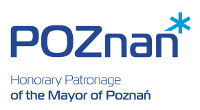PLM2016 Thematic session: Correlations of valency-changing operations within and across languages
Conveners: Katarzyna Janic (Université Lyon 2, University of Zurich) and Nicole Nau (Adam Mickiewicz University)
The contact person for this thematic session is Nicole Nau (e-mail: naunicol@amu.edu.pl).
Many languages use verbal derivational morphology to mark valency-changing mechanisms suchas causative, applicative, reflexive, anticausative, antipassive, and other (Dixon & Aikhenvald 2000; Haspelmath & Muller-Bardey 2004; Wunderlich 2015). The aim of this workshop is to explore the status and functioning of such morphology within language systems, correlations among valency-changing mechanisms within individual languages and cross-linguistically, as well as their interaction with grammatical categories and/or with lexical-semantic features of verbs (Malchukov & Comrie 2015). We welcome papers focusing on detailed analysis in individual languages as well as contributions that discuss cross-linguistic generalizations. The perspective of the workshop is integrative, as we believe that an approach that integrates syntactic and semantic aspects and the way they correlate in discourse context will lead to a better understanding of how valency-changing mechanisms function in languages (Croft 1991, inter alia).
The workshop aims to bring together functional, historical, cognitive and theoretical linguists, typologists and other specialists working on morphosyntactic variation and lexical semantics. Possible topics will include, but are not limited to, the following:
- Correlations between semantic verb classes and valency-changing mechanisms (e.g. digestive verbs and causative, or antagonistic verbs and the antipassive);
- Functional restrictions on valency-changing operations;
- Correlations between valency-changing operations and grammatical categories;
- Possible combinations of derivational processes (e.g. causative and applicative, or causative and antipassive);
- Polysemy and the functional range of individual markers, or groups of markers;
- Diachronic sources of valency-changing morphology;
- The status of valency-changing mechanisms within a language and as a possible parameter for language typology (cf. Nichols et al. 2004; Haspelmath et al. 2014);
- The use of valency-changing devices in discourse.
Details of abstract submission are available here.
References
Croft, William. 1991. Syntactic Categories and Grammatical Relations. Chicago: The University of Chicago Press.
Dixon, R. M. W. & Aleksandra Aikhenvald, eds. 2000. Changing Valency: Case Studies in Transitivity. Cambridge: Cambridge University Press.
Haspelmath, Martin & Calude, Andreea & Spagnol, Michael & Narrog, Heiko & Elif Bamyacı. 2014. Coding causal-noncausal verb alternations: a form-frequency correspondence explanation. Journal of Linguistics 50 (3). 587–625.
Haspelmath, Martin & Thomas Muller-Bardey. 2004. Valence change. Booij, Geert & Lehmann, Christian & Joachim Mugdan, eds. Morphology: A Handbook on Inflection and Word Formation. Volume 2. Berlin: de Gruyter Mouton. 1130-1145.
Malchukov, Andrej & Bernard Comrie, eds. 2015. Valency classes in the world's languages, volume 1-2. Berlin: de Gruyter Mouton.
Nichols, Johanna & Peterson, David A. & Jonathan Barnes. 2004. Transitivizing and detransitivizing languages. Linguistic Typology 8. 149–211.
Wunderlich, Dieter. 2015. Valency-changing word-formation. Muller, Peter O. & Ohnheiser, Ingeborg & Olsen, Susan & Franz Rainer, eds. Word-Formation. A Handbook of the languages of Europe. Volume 2. Berlin: de Gruyter Mouton. 1425-1466.
